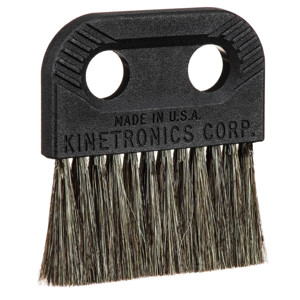Good one! But we want to see clearly, anything tainted with liberal tears will cloud your vision.I've tried many different methods and variations over the years. The only one that really set itself apart from the others was....
100% undiluted liberal tears applied with a fresh tampon.
View attachment 7848606
Join the Hide community
Get access to live stream, lessons, the post exchange, and chat with other snipers.
Register
Download Gravity Ballistics
Get help to accurately calculate and scope your sniper rifle using real shooting data.

Install the app
How to install the app on iOS
Follow along with the video below to see how to install our site as a web app on your home screen.
Note: This feature may not be available in some browsers.
You are using an out of date browser. It may not display this or other websites correctly.
You should upgrade or use an alternative browser.
You should upgrade or use an alternative browser.
How are lenses cleaned at the factory?
- Thread starter joe498
- Start date
Compressed air to clean off dust and debris then acetone and cotton swabs. Some of the harder to get spots we use methanol.
I think Glassaholic probably nailed it. Especially not cleaning if you don't really need to, rub and sleek/scratch avoidance, never ever use ammonia based products and some other solvents that will break down refractive coatings, etc. I haven't been onsite for awhile but our local factories build complex, high resolution electro-optical / IR sensors and targeting systems for Defense. Most of the optical fabrication work, and optical assembly up to optical bench level is cleanroom controlled, but some is not. Also once integrated into systems the optics must be exposed part of the time and sometimes require cleaning. I'll check on latest procedures and see what might apply to cleaning shooting optics.
PS: I love the half-serious half-comedy part of this thread, however I am just barely concerned some may honestly not realize which is which in every case. Just a thought.
PS: I love the half-serious half-comedy part of this thread, however I am just barely concerned some may honestly not realize which is which in every case. Just a thought.
also, reddots dont need to be spotless....fuck, you dont even need to be able to see through them.....IIRC, the first "reddot" sights werent see through, it projected a red dot into a black tube, and your binary vision projected the dot onto the target.
The Armson OEG, I think you're thinking of. Looks like true see through sights came first, but your point is still valid. That said, man, I can't stand for my RDS to not have a nice clear lens... LOL. In the 3-gun world, before the rise of modern LPVO scopes, it was common to use an ACOG in a similar way - you can keep both eyes open and focus on a close target with your off eye, and the reticle in the ACOG works as if it were an OEG (the so-called "Bindon Aiming Concept" - https://www.trijicon.com/our-story/bindon-aiming-concept)
Hmmmmm……………………I be worried rubbing off the lens coatingTry some glass polishing compound. I tried some that is normally used for automotive use on a few other things and it worked extremely good.
I would check with each specific optic's manufacturer for their recommended procedure. Each manufacturer has proprietary lens coatings which are the heart and life blood of their optics every bit as much as the glass itself. Damaging the coating can greatly diminish optics performance.Especially, how are they dried?
When I open up the box on a new optical device, the lenses are absolutely perfectly clean.
I can never get them that clean. There is always some residue and "water marks" that remain on the lens.
I have seen any number of videos and articles on lens cleaning and I somehow think that they are not "gently swabbing the lens and rubbing with microfiber cloth"
on a high volume assembly line.
The reason for this inquiry is that I got my first pistol mounted red dot and got fingerprints and oil spray on the front lens.
In the past I have avoided cleaning my lenses at all cost, because of the risk of damage, and as described above, I can't get them really clean, regardless .
I clean lenses as infrequently as possible to minimize the risk of scratching.
I generally use a lenspen when cleaning is required unless there's residue on the lens the lenspen carbon pad won't eliminate (which I can pretty much tell from experience).
In that circumstance I use the lenspen brush first, blow off the lens with my breath, then wipe with a Zeiss wipe.
Once the liquid from the Zeiss wipe dries I use the carbon pad end of the lenspen since the Zeiss wipe always seems to leave a little residue.
The lenspen can reach way down to a recessed lens and can polish all the way to the edge of the lens.
I generally use a lenspen when cleaning is required unless there's residue on the lens the lenspen carbon pad won't eliminate (which I can pretty much tell from experience).
In that circumstance I use the lenspen brush first, blow off the lens with my breath, then wipe with a Zeiss wipe.
Once the liquid from the Zeiss wipe dries I use the carbon pad end of the lenspen since the Zeiss wipe always seems to leave a little residue.
The lenspen can reach way down to a recessed lens and can polish all the way to the edge of the lens.
I would check with each specific optic's manufacturer for their recommended procedure. Each manufacturer has proprietary lens coatings which are the heart and life blood of their optics every bit as much as the glass itself. Damaging the coating can greatly diminish optics performance.
We're talking about a reflex sight here. Not some super expensive scope with exotic anti dispersion coatings.
Zeiss wipes during the shooting season and the dishwasher to clean them at the end of season! Spot free rinse 
after hurricane katrina, someone had the great idea to write people names on the stuff in their office when our flooded building was being emptied.
afterwards, someone suggested I try MEK to get the sharpie off... it literally MELTED a hole in the top of my dell tower... sure did remove the sharpie though!
I'd be super careful with that stuff on anything.
afterwards, someone suggested I try MEK to get the sharpie off... it literally MELTED a hole in the top of my dell tower... sure did remove the sharpie though!
I'd be super careful with that stuff on anything.
When I worked for Culligan, we made Deionized water filters for Kodak. One tank of resin was charged with hydrochloric acid, the other with lye. Anion and cation the test for Deionized water is continuity it will not carry electricity. Spot free rinse at the carwash as well. It will quickly corrode pipes though.
You also had the option to not respond. That would have left us unsure of your intelligence level.You would shit your pants if you saw what the ocular side of the lens on my carry gun RMR looks like after a week.
Stop being so autistic about this shit.
On second thought it sounds like this is some range toy for you, so carry on.

Sure thing RayYou also had the option to not respond. That would have left us unsure of your intelligence level.
A previous poster mentioned centrifugal drying, so I tied a cord to the trigger guard of my pistol and whirled it around to dry it.
Are you ok, man?
Try this: https://www.birdforum.net/threads/what-should-i-clean-binocular-lenses-with.403813/#post-4133536
This is what I used on expensive coated camera lenses, it’s an old bottle and this stuff will kill you if care is not exercised during its use.Use shit made for actual optics. Photosol makes a bunch of good stuff designed for glass with high tech coatings, etc. Most of the solvents mentioned won't damage the glass, but some can strip the coatings right off the glass...
Generally, pure ethanol or methanol, and an appropriate wipe. The Zeiss wipes mentioned work well. Photosol makes PecPads, which are also great. Their Eclipse cleaning fluid is pure ethanol. Those products are made to be used on modern photographic lenses and sensors, which are arguably even more sensitive than rifle scopes. A blower and brush for getting any large particles off is also needed.
Use a circular technique. Make a pass with a wet wipe/pad, and then use a dry wipe/pad to clean it off and remove the spots/streaks.
Like Glassaholic is saying above, though, you'd be surprised how dirty shit can be and you won't see it in through the scope. The less you clean it, the less chance it has of being damaged by you cleaning it, so don't be all OCD and insist on it always being spotless.
Is this the new Navy Seal copypasta?so I tied a cord to the trigger guard of my pistol and whirled it around to dry it.
Follow-up info on general optics (lens and mirror) cleaning practices used in our electro-optics / IR fabrication and assembly factories. Avoid cleaning if possible. Avoid cotton on anti-reflection coated optics. Talc free gloves. Blow off contaminants with dry filtered compressed air or nitrogen and check. Very lightly wipe once, in one direction with Techclean Purwipe 2355 pad and ethyl alcohol. Avoid grit on frame/bezel etc at the edge of the optic. Repeat with acetone if necessary. Alternate wipe pattern, circular or rectangular from center out. Alpha Texwipe cleanroom swabs for harder to reach optics. Hope this helps 
This almost reads like a mother telling a daughter how to clean “it” after the daughter becomes a “woman” lol.Follow-up info on general optics (lens and mirror) cleaning practices used in our electro-optics / IR fabrication and assembly factories. Avoid cleaning if possible. Avoid cotton on anti-reflection coated optics. Talc free gloves. Blow off contaminants with dry filtered compressed air or nitrogen and check. Very lightly wipe once, in one direction with Techclean Purwipe 2355 pad and ethyl alcohol. Avoid grit on frame/bezel etc at the edge of the optic. Repeat with acetone if necessary. Alternate wipe pattern, circular or rectangular from center out. Alpha Texwipe cleanroom swabs for harder to reach optics. Hope this helps
But seriously, thanks for info.
I forgot to mention the Kinetronics anti-static brush which I don't think you can go wrong with; just keep your paws off the bristles (oil residue), vac it occasionally, wash w/mild soap and distilled water every "blue moon"/never is preferable.

 www.adorama.com
www.adorama.com
Always keep these brushes in their little jewel cases when not in use instead of loose. They of course come in various sizes.
I just got the front/back protective filters for my March 4.5-28X52; they're B 270 Schott glass-14 layer coating each side w/hardened nano coating on top. When I have the time I'll have a Rollei technician whose local to me check the March out w/the protective filters both on/off w/his collimator.

Kinetronics StaticWisk
StaticWisk - hand held anti-static brushes for film, glass & acrylics SW-020 (3/4")
Always keep these brushes in their little jewel cases when not in use instead of loose. They of course come in various sizes.
I just got the front/back protective filters for my March 4.5-28X52; they're B 270 Schott glass-14 layer coating each side w/hardened nano coating on top. When I have the time I'll have a Rollei technician whose local to me check the March out w/the protective filters both on/off w/his collimator.
Last edited:
Similar threads
- Replies
- 80
- Views
- 5K
Rifle Scopes
Revisiting drop testing
- Replies
- 184
- Views
- 6K
- Replies
- 142
- Views
- 17K
- Replies
- 20
- Views
- 2K
- Replies
- 157
- Views
- 30K
